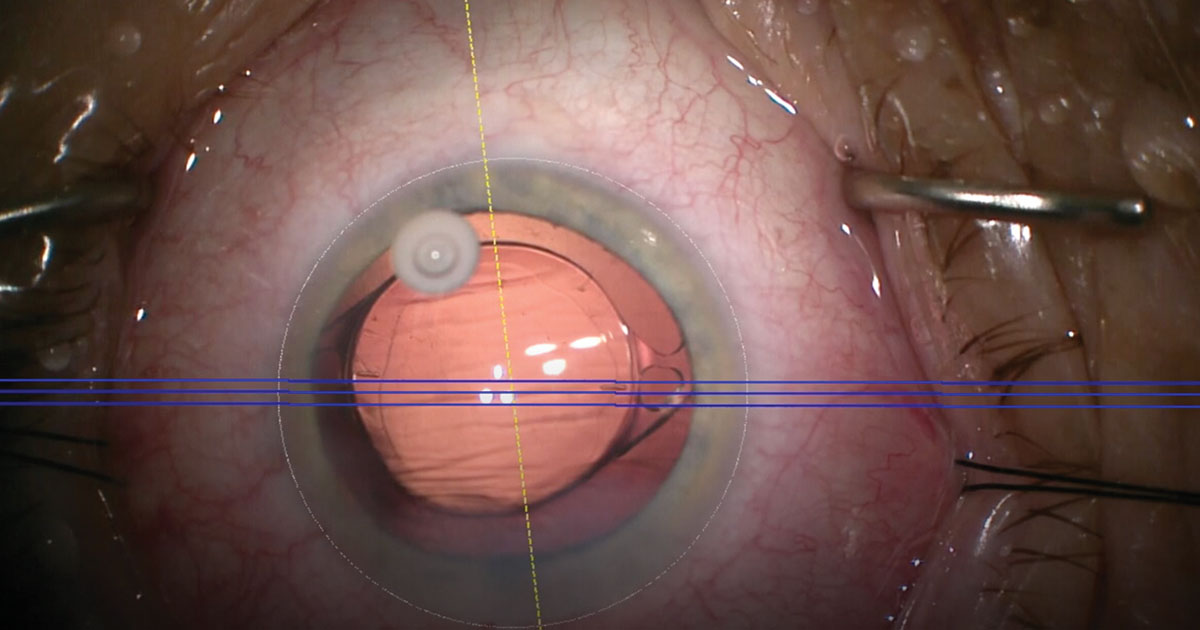Intracapsular administration may simplify Dexycu technique
Intraocular corticosteroid use at the end of phacoemulsification with IOL implantation is a quick and easy way to deliver the medication and control postoperative inflammation after cataract surgery.
This single-dose intraoperative approach results in fewer postoperative medications that the patient needs to use, thus making it more convenient for the patient and eliminating noncompliance issues.

In this column, Dr. Singh explains the surgical technique of Dexycu (dexamethasone intraocular suspension 9%, EyePoint Pharmaceuticals) drug delivery, allowing consistent placement, easy use and more optimal drug retention at the site of delivery.
Thomas “TJ” John, MD
OSN Surgical Maneuvers Editor
Dexycu (dexamethasone intraocular suspension 9%, EyePoint Pharmaceuticals) is indicated for the treatment of postoperative inflammation, and its label directs administration into the posterior chamber inferiorly behind the iris at the end of ocular surgery. Following the drug’s commercial launch in 2019, surgeons have been innovating the administration technique, both to improve visualization of the drug depot and consistency of placement and to avoid challenges such as migration into the anterior chamber. A new method of Dexycu administration into the capsular bag facilitates easier and more reliable placement with equivalent anti-inflammatory efficacy.

In-the-bag technique
At the end of surgery, following routine placement of an IOL, I fill the anterior chamber with balanced salt solution and confirm that IOP is within normal range. Through a paracentesis, I insert the cannula containing Dexycu between the IOL and peripheral anterior capsule and quickly inject the 5 µL dose (Figure 1). I extract the cannula in the same fashion I entered the eye and rehydrate with balanced salt solution as needed.

Source: Inder Paul Singh, MD
This technique offers multiple advantages including consistency, visibility and additional security. With the original approach, the addition of balanced salt solution after depositing Dexycu could dislodge the drug from its initial location. Or, in patients with large dilated pupils, there was insufficient space for the drug depot to stay beneath the iris (Figure 2). With this technique, the drug sphere tends to remain where it is placed because the edge of the IOL and the anterior leaflet prevent the drug from migrating into the anterior chamber. Visualization with this technique is also superior, allowing the surgeon to directly observe the volume and location of the drug. This method also decreases the likelihood of iatrogenic iris trauma.

In my experience, this technique has reduced the likelihood of drug migration into the visual axis or anterior chamber, which has resulted in fewer patients reporting disrupted vision or corneal edema in the postoperative period.
Pearls for adopting this technique
Surgeons seeking to adopt an in-the-bag technique for Dexycu administration may find these pearls helpful.
No more sweeping. Surgeons familiar with the original technique know that one recommendation was to move the cannula in a sweeping motion behind the iris while releasing the drug. The modified technique described above eliminates the need for a sweeping motion.
Rapid release is key. Given that the vehicle for Dexycu is hydrophobic and will stick to the cannula naturally, swift injection of the drug and withdrawal of the cannula decreases the likelihood that it will adhere to the cannula tip (Figure 3). Be confident and definitive when pushing the drug through the cannula and extracting instrumentation.

Hydrate wounds and keep the eye formed. Eyes with structural integrity are less likely to experience movement of the drug during balanced salt solution administration, so I prefer to ensure that the eye is fully formed and the chamber remains stable when initiating Dexycu placement. Also, proper wound hydration leads to smooth entry and exit of the cannula.
Do not overthink placement within the bag. Surgeons who worry too much about the exact placement of the Dexycu sphere in relation to the IOL — say, trying to fit the drug in an exact area near the haptic — are ignoring the fact that the drug remains efficacious regardless of placement. Placing the drug securely in the periphery of the lens is what matters most. Let the IOL do the work of keeping the drug in the periphery.
The power of consistency
Surgeons strive for consistency, and this new method of incorporating Dexycu into your armamentarium allows uniform delivery of the drug after cataract surgery. I suggest this in-the-bag technique to new Dexycu users and to surgeons who want to simplify their use of Dexycu without sacrificing efficacy.
- References:
- Hovanesian JA. Tips for Dexycu injection. www.aao.org/clinical-video/tips-dexycu-injection. Published April 10, 2020. Accessed Feb. 10, 2021.
- Osher RH, et al. J Cataract Refract Surg. 2020;doi:10.1097/j.jcrs.0000000000000458.
- For more information:
- Inder Paul Singh, MD, can be reached at The Eye Centers of Racine and Kenosha, 3805B Spring St., Suite 140, Racine, WI 53405; email: inderspeak@gmail.com.
- Edited by Thomas “TJ” John, MD, a clinical associate professor at Loyola University Chicago and in private practice in Oak Brook, Tinley Park and Oak Lawn, Ill. He can be reached at email: tjcornea@gmail.com.
